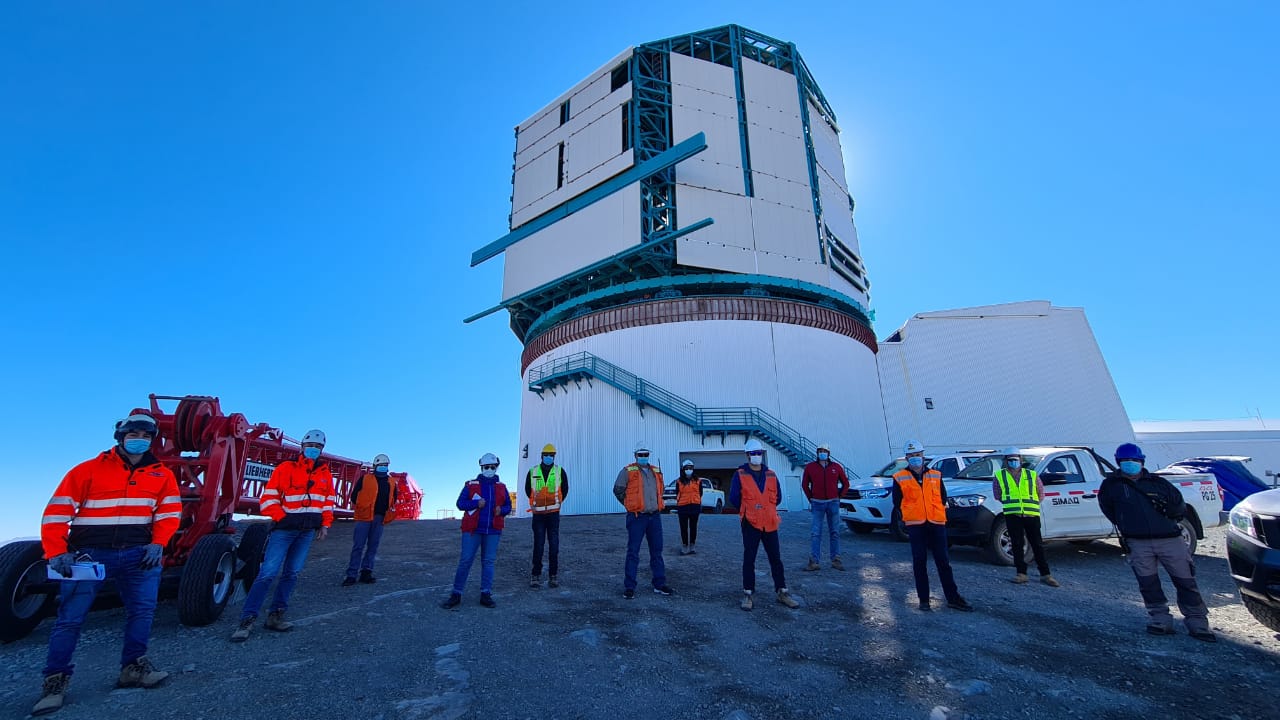On September 28th, just over six months after the COVID-19 pandemic brought construction on Cerro Pachón to an unexpected halt, the Rubin Observatory team was able to restart limited construction activities on the summit. This “Phase 1” restart was the result of months of preparation and hard work by the Rubin team, all with the goal of ensuring workers’ health and safety as they returned to work. A thorough review was conducted in conjunction with AURA and NOIRLab prior to the restart. The review determined that the Rubin Observatory Construction Project, as well as the existing observatories on Cerro Pachón and Cerro Tololo, had successfully implemented the appropriate safety protocols and that limited activities could resume at the summit facilities. Jacques Sebag, Assembly, Integration, and Verification (AIV) Manager for Rubin, credits the incredible resolve of the summit team members, who performed at the highest levels during the Phase 0 planning despite the challenges presented by the pandemic; their efforts were critical in moving forward to Phase 1. Although the Rubin Construction team is excited to begin working on the summit again, they are also aware of the need to stay alert and cautious.
The Phase 1 restart is a gradual and carefully-planned process. During the first week of the restart, a team of about 15 to 20 people worked on the summit for three days. Now, the goal is to gradually work up to a five-day work week by the end of October. During Phase 1, the administrative offices on the AURA Recinto in La Serena will stay closed, and any activities that can be done remotely will continue in that manner. Bus service between the Recinto and the summit will resume with a very limited capacity, and some contractors will be able to restart work on the summit, following a progressive and controlled process. Compared to the activity before the shutdown it’s a small fraction—as part of the gradual restart only about 15% of the former team returned to the summit at first—but the goal is to reach about 40% of the previous team’s size over time. And it’s a huge improvement in summit productivity over the shutdown period, when only small teams were permitted to travel to the summit once or twice a week for essential inspection and maintenance tasks.
One of the first priorities for the Phase 1 restart is to finish improvements to the cafeteria on the summit (called the Rubin Casino) so that meals can safely be served to summit personnel. Another important early task is the restart of the network and servers in the computer room on the summit. The IT team is following a plan to get everything back online, which will enable other construction activities in the Rubin facility to be supported remotely.
The major contracted work that was in progress before the shutdown will also ramp up gradually; we are exploring options that will enable the return of the international teams. It’s expected that the Dome team from Italy-based EIE Group will return first, with the Telescope Mount Assembly (TMA) team from vendor group UTE in Spain arriving later in 2021.
The Rubin team has been preparing for this restart almost since the day construction paused, and has worked very hard to make sure the health and safety of the summit staff and their families is protected as work resumes. Everyone is excited that progress on the facility can begin again!


